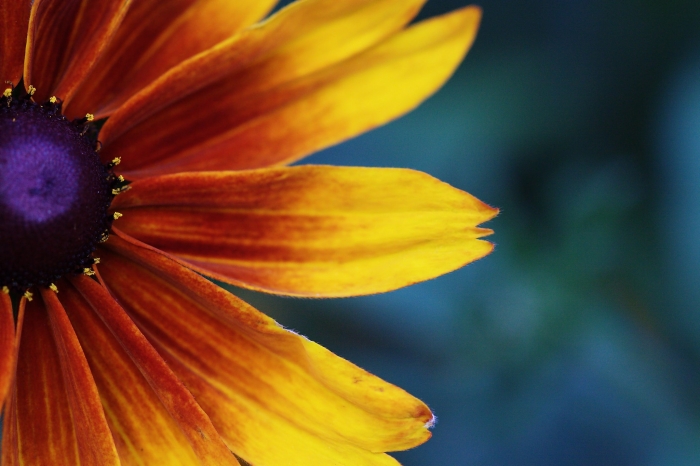Black-Eyed Susan
(Rudbeckia hirta var. angustifolia)
Black-Eyed Susan (Rudbeckia hirta var. angustifolia)
/
/

Tom Bech
CC BY 2.0
Image By:
Tom Bech
Recorded By:
Copyright:
CC BY 2.0
Copyright Notice:
Photo by: Tom Bech | License Type: CC BY 2.0 | License URL: https://creativecommons.org/licenses/by-sa/2.0/ | Uploader: Tom Bech | Publisher: Flickr |








Estimated Native Range
Summary
Rudbeckia hirta var. angustifolia, commonly known as Black-Eyed Susan, is a versatile plant that can be an annual, biennial, or short-lived perennial herb. It is native to open woodlands, prairies, fields, and roadsides across the Eastern and Central United States. This plant typically grows to a height of 1-4 feet (0.3-1.2 meters) and a width of 1-2 feet (0.3-0.6 meters). Black-Eyed Susan is characterized by its daisy-like flowers with a prominent, raised central cone that is dark brown to black, surrounded by bright yellow to orange-yellow petals. It blooms profusely from early summer to fall, providing a long season of color.
Black-Eyed Susan is valued for its ease of maintenance and its ability to attract pollinators such as butterflies and bees. It is commonly used in wildflower gardens, as a border plant, or in naturalized areas. This plant thrives in full sun but can tolerate light shade. It prefers well-drained soils but is adaptable to various soil types, including clay. While generally drought-tolerant, it benefits from occasional watering during prolonged dry spells. Popular garden cultivars include ’Indian Summer’ with larger flowers and ’Goldsturm’, known for its compact habit and profuse blooming. Potential problems include powdery mildew and leaf spots, though these are generally not severe. It is not known for aggressive roots or significant disease issues.CC BY-SA 4.0
Black-Eyed Susan is valued for its ease of maintenance and its ability to attract pollinators such as butterflies and bees. It is commonly used in wildflower gardens, as a border plant, or in naturalized areas. This plant thrives in full sun but can tolerate light shade. It prefers well-drained soils but is adaptable to various soil types, including clay. While generally drought-tolerant, it benefits from occasional watering during prolonged dry spells. Popular garden cultivars include ’Indian Summer’ with larger flowers and ’Goldsturm’, known for its compact habit and profuse blooming. Potential problems include powdery mildew and leaf spots, though these are generally not severe. It is not known for aggressive roots or significant disease issues.CC BY-SA 4.0
Plant Description
- Plant Type: Herb
- Height: 1-3.5 feet
- Width: 1-1.5 feet
- Growth Rate: Moderate
- Flower Color: Orange, Yellow
- Flowering Season: Fall
- Leaf Retention: Deciduous
Growth Requirements
- Sun: Full Sun
- Water: Low, Medium
- Drainage: Medium
Common Uses
Bee Garden, Bird Garden, Butterfly Garden, Deer Resistant, Drought Tolerant, Hummingbird Garden, Low Maintenance, Rabbit Resistant, Showy Flowers, Street Planting
Natural Habitat
Native to open woodlands, prairies, fields, and roadsides across the Eastern and Central United States
Other Names
Common Names:
Scientific Names: , Rudbeckia hirta var. angustifolia, Rudbeckia divergens, Rudbeckia floridana var. angustifolia,
GBIF Accepted Name: Rudbeckia hirta var. angustifolia (T.V.Moore) Perdue